Science Daily News | 18 May 2023

Views (217)
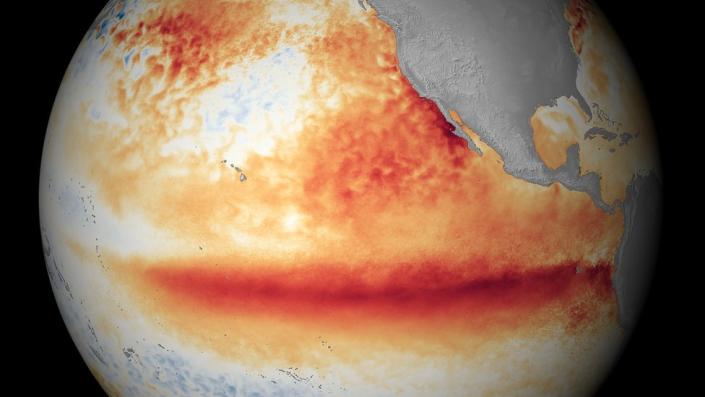
Heat wave in Asia made 30 times more likely because of climate change, scientists say
A searing heat wave in parts of southern Asia in April this year was made at least 30 times more likely by climate change, according to a rapid study by international scientists released Wednesday. Sizzling temperatures of up to 45 degrees Celsius (113 degrees Fahrenheit) were recorded in monitoring stations in parts of India, Bangladesh, Thailand and Laos last month — which was unusually high for the time of year. The World Weather Attribution group uses established models to quickly determine whether climate change played a part in extreme weather events.

BENGALURU, India (AP) — A searing heat wave in parts of southern Asia in April this year was made at least 30 times more likely by climate change, according to a rapid study by international scientists released Wednesday.
Sizzling temperatures of up to 45 degrees Celsius (113 degrees Fahrenheit) were recorded in monitoring stations in parts of India, Bangladesh, Thailand and Laos last month — which was unusually high for the time of year.
The climate change-fueled heat caused deaths, widespread hospitalizations, damaged roads, sparked fires and led to school closures in the region.
The World Weather Attribution group uses established models to quickly determine whether climate change played a part in extreme weather events. While the studies themselves are not yet peer-reviewed, which is the gold standard for science, they are often later published in peer-reviewed journals.
The study found that temperatures were at least 2 degrees Celsius (3.6 degrees Fahrenheit) hotter in the region because of climate change.
If the global average temperature reaches up to 2 degrees Celsius warmer than it was in the late 1800s, the April heatwave could occur every one to two years in India and Bangladesh, the study said. Currently, the world is around 1.1 to 1.2 degrees Celsius (2 to 2.2 degrees Fahrenheit) warmer than pre-industrial times.
“We see again and again that climate change dramatically increases the frequency and intensity of heatwaves, one of the deadliest weather events there are," said Friedrike Otto, a senior climate scientist at Imperial College London and one of the study's authors.
“Access to healthcare and to cooling solutions like fans and air conditioners is missing for a lot of the population in this region,” said Emmanuel Raju, director of the Copenhagen Centre for Disaster Research at the University of Copenhagen and another of the study's nearly two dozen authors.
Raju emphasized that heat affects the poorest people and people whose work requires them to be outside — farmers, street vendors and construction workers — the most.
“It's important to talk about who can cope and adapt to heat,” he said. “Many are still recovering from the pandemic, and from past heatwaves and cyclones, which leaves them trapped in a vicious cycle.”
Scientists say that drastic measures to reduce carbon dioxide emissions immediately is the only solution.
“Heat waves will become more common, temperatures will rise even more and the number of hot days will increase and become more frequent” if we continue to pump greenhouse gases into the atmosphere, said Chaya Vaddhanaphuti, a professor at the Chiang Mai University in Thailand and a co-author of the study.
Vimal Mishra, a professor at the Indian Institute of Technology in Gandhinagar who studies the region's climate, acknowledged the importance of studies that help attribute specific weather events to climate change but said more action needs to be taken.
“We should go beyond attribution and talk about how climate change is affecting weather fundamentally and look at how we can develop climate resilience,” he said.
___
___
Alderney dig uncovers masses of Roman pottery
Dig Alderney is working on Longis Common, where an Iron Age Cemetery and a Roman settlement lie.
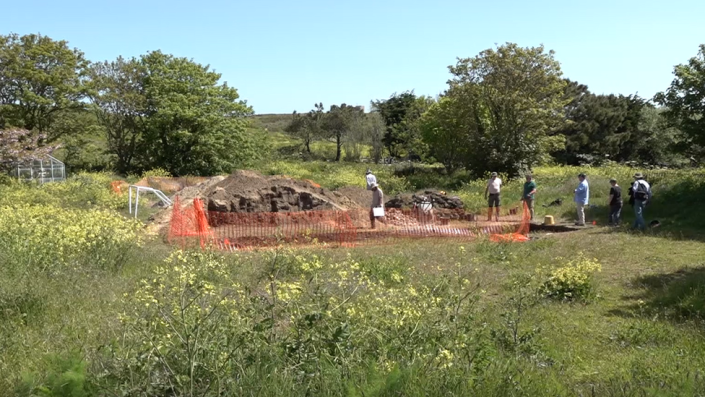
The latest archaeological dig in Alderney has uncovered "a very large amount" of Roman pottery.
Dig Alderney is working on Longis Common where an Iron Age Cemetery lies, with a Roman settlement built over the top.
Dr Jason Monaghan, the secretary for Dig Alderney, said about 1,000 pieces of pottery had been discovered so far.
Work at the dig is due to continue until 27 May.
Dr Monaghan said: "Ten days in we haven't found any Roman buildings, but what we have found is a very large amount of Roman material.
"We've found probably a thousand pieces of Roman pottery so far, and we've also found some objects from the Iron Age, which obviously have kicked up into the Roman layers."
The Lieutenant-Governor of the Bailiwick of Guernsey has also been helping with the dig.
Lt Gen Richard Cripwell said he found the different types of pottery being discovered "fascinating".
He said: "There's a difference between what's of interest to me I suspect and the archaeologists, but we have found lots of pottery, different types of pottery, which I find fascinating.
"But what has also been very interesting to me is the way in which everything is of interest to the archaeologists, if they're not sure they put it to one side, and then when they've got more time they actually try to understand what they found."
Prior to the excavation at Longis Common, Dig Alderney carried out its first dig to understand the history of the Nunnery in 2021.
The archaeological charity found parts of the south and east walls of a large building under fortified remains and an "ornately carved stone arch" during the 2021 dig.
Will the crisp bags of today still be washing ashore in 60 years' time?
After old crisp packets wash up on a beach, the BBC asks what is being done to improve packaging?
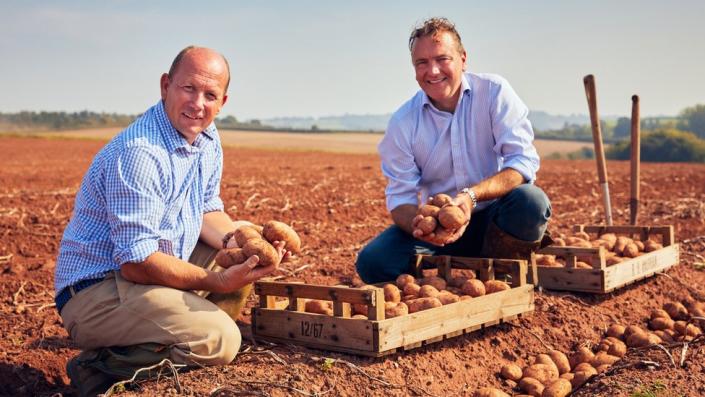
Wry smiles and sense of nostalgia aside, the appearance of crisp packets from the 1960s on a Norfolk beach is a potent reminder of the longevity of single use plastics. Can anything be done to prevent today's crisp packets returning to our shores 60 years from now?
Chris Turner was staying at his holiday home in Scratby, near Great Yarmouth, when he started to find decades-old litter on the beach.
His discoveries include pre-decimalisation packets of Golden Wonder crisps, marked with a price of 5d, and 2d Spangles sweets.
The volume of single use crisp packets has both environmental experts and the crisp makers themselves concerned.
Tash Jones, of Fairfields Farm Crisps, near Colchester in Essex, said she found Mr Turner's discoveries at Scratby very "disheartening".
"Packaging is a difficult one and I don't think anybody has quite got there yet," she said.
Fairfields, she said, was committed to finding ever more sustainable forms of packaging for its crisps.
The company has tried a number of different packaging types in recent years, including a single ply wrapper which was found to reduce the shelf life too much to be economically viable.
Its move from a three-ply packet to a two-ply bag using thinner film from a net-zero carbon packaging producer, however, has worked well, said Ms Jones.
What about compostable bags?
"It is not a never," said Ms Jones. "But a lot of local authorities will reject compostable packaging."
The biggest issue, she said, was that while many crisp packets are recyclable, they are not actually recycled because many people will put bags in the bin rather than take them to a dedicated flexible plastic recycling facility.
However, such packaging was not airtight, which led to crisp makers using plastic bags instead
In the 1950s and 1960s, crisp packets were made from single-layer of plastic, often with a transparent section so the buyer could see the crisps inside
Today's crisp packets often have a number of layers and are usually made from polypropylene or polyethylene with an aluminium coating
The environmental charity WRAP agrees.
"There is still change that needs to take place for widespread roll-out of recycling collections at kerbside for plastic bags and wrappings," a spokesperson for WRAP said. "The infrastructure to recycle this type material at scale, is not universally available.
"Every form of packaging leaves an environmental footprint, and packaging innovations must reduce these to be more sustainable."
However, the organisation said consumers needed to do their bit too by taking their crisp packets and similar wrappers to recycling facilities at supermarkets across the UK.
The charity said it understood the difficulties some people faced in recycling plastic wrapping but warned it was "a critical step in the pathway to building the infrastructure at scale".
It said it would "continue to work with industry partners to prepare for kerbside collections of plastic bags and wrapping".
The biggest crisp company in the UK is Walkers, which is owned by PepsiCo.
"We plan to eliminate virgin fossil-based plastic in all crisp and snack bags by using 100% recycled or renewable content in all packets by 2030," a spokesperson said.
In the meantime, the company said it was finding ways to cut the amount of plastics used in its packaging and encouraging customers to recycle packets.
The recycling issue is entirely bypassed by the Herefordshire-based company Two Farmers, which sells crisps in compostable packets.
Co-founder Sean Mason said his packaging is made of cellulose and uses plant-based inks and glue. An extremely thin layer of aluminium is applied to the inside of the cellulose wrapper to keep the crisps fresh.
"The aluminium sprayed on the film is less than you would find in the soil and there is zero plastic," he said.
The firm's bags will break down in a typical domestic compost set-up within 25 to 35 weeks.
So why aren't all companies going down the compostable route?
The first reason is price.
A packet for a standard 40g bag costs independent crisp makers about 1.6p. A compostable Two Farmers bag costs 12.5p.
"We launched with it and gave consumers the choice - they knew we were more expensive from day one."
For other makers suddenly to increase their packet price by 11p to cover the compostable packaging cost could kill their business, said Mr Mason.
The second issue is shelf-life.
A typical plastic and foil bag has a shelf life of six or more months while a cellulose packet is about 4.5 months, said Mr Mason.
Plastic kills fish and sea animals and takes hundreds of years to break down into less harmful materials.
Two Farmers' cellulose packets, on the other hand "completely break down in water", the end product resembling a slimy goo.
If they were eaten by a sea animal the bags, Mr Mason said, would "break down in their digestive tract and pass safely through".
"We don't want our bags littered anywhere, but if they were dropped at sea you wouldn't find our bags coming to shore from the water in a year's time never mind in 60," he said.
What are El Niño and La Niña, and how do they change the weather?
Global temperatures and rain patterns are affected by climate phenomena known as El Niño/La Niña.
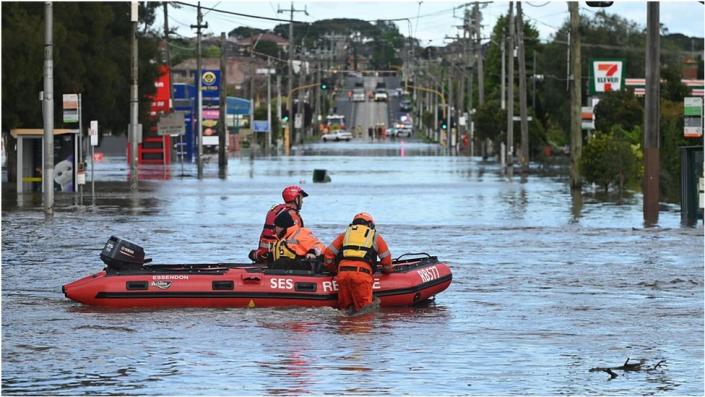
New data shows that 2022 was the fifth hottest year for Europe since records began.
But scientists are warning that 2023 could be even warmer, as a climate phenomenon called La Niña - which has been suppressing global temperatures - comes to an end.
La Niña is part of a climate phenomenon called the El Niño Southern Oscillation (ENSO) system.
It has two opposite states - El Niño and La Niña - both of which significantly alter weather patterns across the globe.
For the last few years, the world has been in successive La Niña periods, which have lowered temperatures and brought heavy rains to Canada and Australia.
Winds blowing along the Equator above the Pacific Ocean - from South America in the east towards Asia in the west - were stronger than normal.
These "trade winds" piled warm water off the coast of Asia, raising the sea surface level. In the east, near the Americas, cold water flowed upwards to the surface.
During El Niño the opposite happens - weaker trade winds mean the warm water spreads out back towards the Americas, and less cold water rises towards the surface.
The phenomenon was first observed by Peruvian fisherman back in the 1600s.
They noticed that warm waters seemed to peak near the Americas in December, and nicknamed the event "El Niño de Navidad", Christ Child in Spanish.
Not every El Niño or La Niña event is the same, but scientists have observed some typical effects:
Temperatures
Global temperatures increase by about 0.2C during an El Niño episode, and fall about 0.2C during La Niña.
El Niño means warmer water spreads further, and stays closer to the surface. This releases more heat into the atmosphere, creating wetter and warmer air.
The hottest year on record, 2016, was an El Niño year.
Between 2020 and 2022, the northern Hemisphere had three La Niña episodes in a row.
Prof Adam Scaife from the Met Office said: "Global average temperature over the last three years has been at near record levels, but it would have been even higher without the cooling effects of a prolonged La Niña."
A 0.2C temperature rise would add about 20% to the existing global temperature rise from climate change.
The Met Office expects La Niña to end later this year, "raising the prospect of even higher global temperatures".
Changes to rainfall
During El Niño events, the warmer water pushes the Pacific jet stream's strong air currents further to the south and the east.
This brings wetter weather to southern US states and the Gulf of Mexico, while the north of the US and Canada remain drier.
Asia, Australia and Central and Southern Africa typically experience drought.
In La Niña events the opposite is seen: drought in the southern US, and heavy rains in Canada and Asia.
Tropical storms
La Niña also generates more hurricanes in the Atlantic - affecting Florida and other southern states of the US - but fewer tropical storms in the Pacific.
The opposite is true of El Niño events.
El Niño and La Niña episodes typically occur every two to seven years, and usually last nine to 12 months.
They don't necessarily alternate: La Niña events are less common than El Niño episodes.
The extreme weather events caused by El Niño and La Niña affect infrastructure, food and energy systems around the world.
During El Niño events, less cold water rises to the surface off the Americas which brings fewer nutrients from the bottom of the ocean.
That means there is less food available for marine species like squid and salmon, in turn reducing fish stocks for South American fishing communities.
In 2021, the UN's climate scientists, the IPCC, said the ENSO events which have occurred since 1950 are stronger than those observed between 1850 and 1950.
However, it also said that historical evidence like tree rings, corals and sediment records shows that there have been variations in the frequency and strength of these episodes since the 1400s.
Pipeline network planned to cut greenhouse gas emissions from industry
Businesses in three counties would send their emissions to be stored under the Irish Sea.
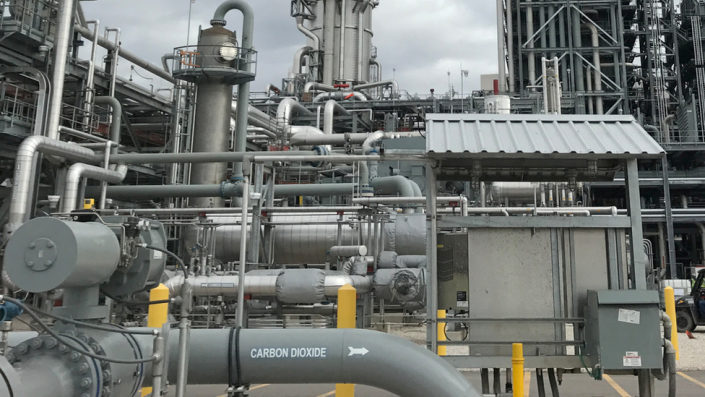
Industrial sites in Staffordshire, Cheshire and Derbyshire are aiming to set up a network of pipes to collect carbon dioxide emissions and pump it to be stored under the Irish Sea.
The "Peak Cluster" group is made up of five cement and lime plants plus a waste power plant near Northwich.
The aim is to have the pipelines up and running by 2030 with units set up at those sites to capture the emissions.
It could cut three million tonnes of emissions each year, the group claimed.
The cement and lime plants in the Peak District and Staffordshire Moorlands are owned by Tarmac, Breedon, Lhoist and Aggregate Industries.
The underground pipes will feed into one of two existing storage sites in the Irish Sea, at locations which once held natural gas.
Project director John Egan from Progressive Energy said the scheme was still in its early stages, but would make a "crucial contribution" to driving down harmful emissions.
But there have been warnings about the potential for CO2 leakage if the correct sites are not chosen.
Global warming set to break key 1.5C limit for first time
The world is likely to hit 1.5C of warming within the next five years because of rising carbon emissions.
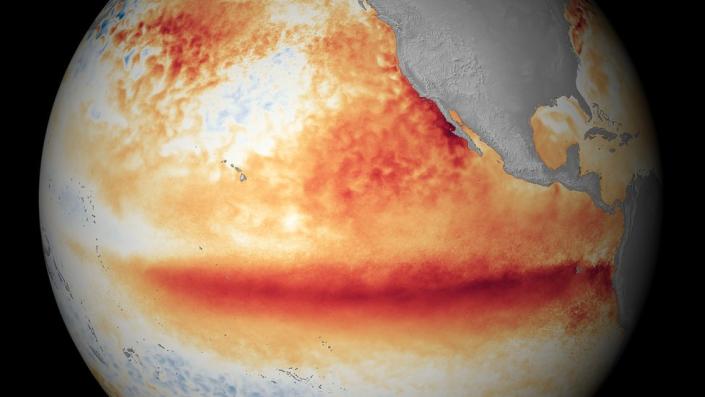
Our overheating world is likely to break a key temperature limit for the first time over the next few years, scientists predict.
Researchers say there's now a 66% chance we will pass the 1.5C global warming threshold between now and 2027.
The chances are rising due to emissions from human activities and a likely El Niño weather pattern later this year.
If the world passes the limit, scientists stress the breach, while worrying, will likely be temporary.
Hitting the threshold would mean the world is 1.5C warmer than it was during the second half of the 19th Century, before fossil fuel emissions from industrialisation really began to ramp up.
And breaking the limit even for just one year is a worrying sign that warming is accelerating and not slowing down.
The 1.5C figure has become a symbol of global climate change negotiations. Countries agreed to "pursue efforts" to limit global temperature rises to 1.5C under the 2015 Paris agreement.
Going over 1.5C every year for a decade or two would see far greater impacts of warming, such as longer heatwaves, more intense storms and wildfires.
But passing the level in one of the next few years would not mean that the Paris limit had been broken. Scientists say there is still time to restrict global warming by cutting emissions sharply.
Since 2020 the World Meteorological Organisation has been giving an estimate of the chances of the world breaking the 1.5C threshold in any one year.
Back then they predicted there was less than a 20% chance of breaking 1.5C in the five years ahead.
By last year this had increased to 50%, and now it's jumped to 66%, which the scientists say means it's "more likely than not."
The figure is not a direct measure of the world's temperature but an indicator of how much or how little the Earth has warmed or cooled compared to the long term global average.
Scientists use average temperature data from the period between 1850-1900 as a measure of how hot the world was before our modern reliance on coal, oil and gas.
Over the past few decades our overheating world has nudged the mercury up so that in 2016, the warmest on record, global temperatures were 1.28C above the pre-industrial figure.
And in the years between now and then they believe there's a very solid chance the 1.5C limit will be surpassed for the first time.
"We really are now within reach of a temporary exceedance of 1.5C for the annual mean temperature, and that's the first time in human history we've been that close," said Prof Adam Scaife, head of long range forecasts at the Met Office, who compile the data from weather and climate agencies around the world.
"I think that's perhaps the most stark and obvious and simplest statistic that we've got in the report," he told a news conference.
The researchers stress that temperatures would have to stay at or above 1.5C for 20 years to be able to say the Paris agreement threshold had been passed.
"This report does not mean that we will permanently exceed the 1.5C level specified in the Paris Agreement which refers to long-term warming over many years," said WMO Secretary-General Prof. Petteri Taalas
"However, WMO is sounding the alarm that we will breach the 1.5C level on a temporary basis with increasing frequency," he said.
The second, critical part is the likely appearance of El Niño, a weather phenomenon with global implications.
For the last three years the world has been experiencing a La Niña event which has dampened climate warming to some extent.
But the extra heat that El Niño will bring to the surface of the Pacific will likely push the global temperature to a new high next year.
However there is still uncertainty around the onset and scale of the event.
"It's worth noting that a lot of our forecasts that are being made now for the El Niño that we think is developing this winter, are showing pretty big amplitude," Prof Scaife told reporters.
"But to actually predict the magnitude, or a subsequent event within the five-year period, we can't give the exact dates of that beyond this one year ahead, so it could be in three or four years from now we get to two and a half degree El Niño and that might be the one that does it. "
The Arctic will experience warming at a greater level than many regions, with the temperature anomaly expected to be three times as large as the global figure over the next five northern hemisphere winters.
Northern Europe including the UK will likely experience increased rainfall for the May to September period over the next five years, the report says.
0 Likes
